Description
Cylindra Beet (A.K.A. Butter Slicer, Formanova)
250 Seeds per pack
Days to Maturity: 55–65 Days
Sun Requirements: Full sun
Botanical Name: (Beta vulgaris)
Introduced to the U.S. in 1892, this dependable heirloom from Denmark gained favor for its distinctive shape and steady yields. Cylindra grows long, uniform roots—up to 8 inches long and 2 inches wide. Their straight, narrow form makes peeling and slicing simpler, especially helpful when canning, pickling, or preparing large batches.
The roots are dark red, smooth, and ringless, with a tender, sweet, and mildly earthy flavor. They’re excellent roasted, juiced, or thinly sliced into salads. Since much of the root grows above ground, mounding soil around the base keeps skins tender and helps prevent pest damage.
These compact plants send roots downward instead of spreading out, a space-saving advantage in smaller garden beds. Their small reddish-green tops are also edible—milder and sweeter than common beet greens—and good cooked or raw. Cylindra also stores well, keeping its flavor and texture for months after harvest.
Packed with vitamins A, C, and K, along with folate, Cylindra is a healthy addition to the garden!
Disease Resistance: Leaf Spot, Powdery Mildew.
Planting Instructions for Cylindra Beet Seeds
When to Plant:
Sow Cylindra beet seeds outdoors in early spring, about 3 weeks before your last expected frost date, as soon as the soil can be worked. For a fall crop, plant seeds 10 to 12 weeks before your first fall frost. In regions with mild winters, Cylindra beets can also be grown during the cool season. Continue planting in succession every 1–2 weeks until late spring and again starting in late summer to extend your harvest.
Where to Plant:
Cylindra beets prefer full sun and loose, well-drained soil with a pH between 6.0 and 7.0. Avoid planting in heavy clay soil unless amended with compost or other organic matter. Raised beds and deep containers (at least 12″) are excellent options for improved drainage and root development. Choose a location that gets at least 6 hours of sunlight daily.
How to Sow Seeds:
Soak Cylindra beet seeds in room-temperature water for 1 to 12 hours before planting to speed germination. Sow seeds ½ inch deep and 1–2 inches apart in rows spaced 12 to 18 inches apart. Each seed is actually a cluster and may sprout multiple seedlings. Once seedlings are 3–4 inches tall, thin them to 2–4 inches apart. Thinned greens are edible and nutritious.
Growing:
Keep soil consistently moist during germination, which usually takes 7 to 20 days. Water daily or as needed to maintain surface moisture. Once plants are established, provide about 1 inch of water per week. Mulch with straw or shredded leaves to retain moisture and protect the beet shoulders from sun exposure. Hill compost around young seedlings to support growth and provide steady nutrition.
Care Tips:
Weed regularly, especially while plants are young. Avoid disturbing the roots when weeding or thinning. Cylindra beets benefit from low-nitrogen, phosphorus-rich fertilizers. Apply compost or a balanced organic fertilizer (such as 5-10-10) at planting and again after 4 weeks. Use floating row covers to protect young plants from pests like flea beetles and leaf miners. Rotate crops annually to prevent disease buildup in soil.
Harvesting:
Cylindra beet greens can be harvested as needed once they are 4 to 6 inches tall—take no more than 1 or 2 leaves per plant to avoid slowing root growth. Cylindra beets are ready for harvest about 55 to 65 days after planting, when the roots reach 1–3 inches in diameter. Water the soil the night before, then gently lift roots using a trowel or by hand. Trim off greens, leaving about 1 inch of stem attached to reduce bleeding.
Storage:
Brush off excess dirt—don’t wash until ready to use. For short-term storage, store Cylindra beet roots in a perforated plastic bag in the refrigerator for up to 2 weeks. For long-term storage, place unwashed roots in a container with moist sand in a cool, dark location.
Seed Saving:
Cylindra beets don’t produce seed until their second year of growth. To save seed, you’ll need to keep healthy, mature roots from your harvest and store them over winter in a cool, humid place. In early spring, replant those roots in the garden, spacing them well apart. They will grow flower stalks and produce seeds by midsummer. Cylindra beets cross easily with Swiss chard, so isolate flowering plants by at least 1–3 miles for pure seed.
Once the seeds are dry, store them in an airtight container in a cool, dry place—ideally kept around 59°F (15°C) with relative humidity levels between 40% and 60%. Avoid locations where temperatures rise above 68°F (20°C) or drop below 33°F (1°C). Properly stored, Cylindra beet seeds can remain viable for 2 to 5 years. We also offer Seed Saving Envelopes to help keep your harvested seeds neat and organized.
FAQ:
What is the historical or notable background of Cylindra Beet?
Cylindra Beet, also known as Butter Slicer or Formanova, is a Danish heirloom introduced to the U.S. in 1892. It gained popularity for its long, uniform shape, and is a favorite among home gardeners and canners alike.
How would you describe the flavor of Cylindra Beet?
Cylindra Beet has a sweet, tender, and mildly earthy flavor. Its smooth, ringless texture makes it excellent for roasting, juicing, or slicing into salads.
What does Cylindra Beet look like, and how does it grow?
Cylindra produces dark red roots that grow up to 8 inches long and 2 inches wide. Its cylindrical shape makes it easier to peel and slice, and the compact plant sends roots downward instead of outwards, saving space in the garden.
How and when do I harvest Cylindra Beet?
Harvest Cylindra Beets 55–65 days after planting, when roots are 1–3 inches in diameter. Gently lift them from moist soil and trim greens, leaving an inch of stem to prevent bleeding.
When is the best time to plant Cylindra Beet?
Plant in early spring as soon as the soil can be worked, about 3 weeks before the last frost. For a fall harvest, sow 10–12 weeks before the first frost. Succession planting helps extend the harvest window.
What are the common culinary uses of Cylindra Beet?
Cylindra is ideal for canning, pickling, roasting, and slicing raw into salads. The greens are also edible—milder and sweeter than typical beet tops—and can be enjoyed cooked or raw.
What’s the best way to store Cylindra Beet after harvest?
For short-term storage, keep unwashed roots in a perforated bag in the refrigerator for up to 2 weeks. For longer storage, bury them in moist sand in a cool, dark place.
What nutrients does Cylindra Beet provide?
Cylindra is rich in vitamins A, C, and K, along with folate—making it a nutritious addition to any diet.
Does Cylindra Beet have any notable disease resistance?
Yes, Cylindra is known for its resistance to Leaf Spot and Powdery Mildew, contributing to its reliability and ease of cultivation.

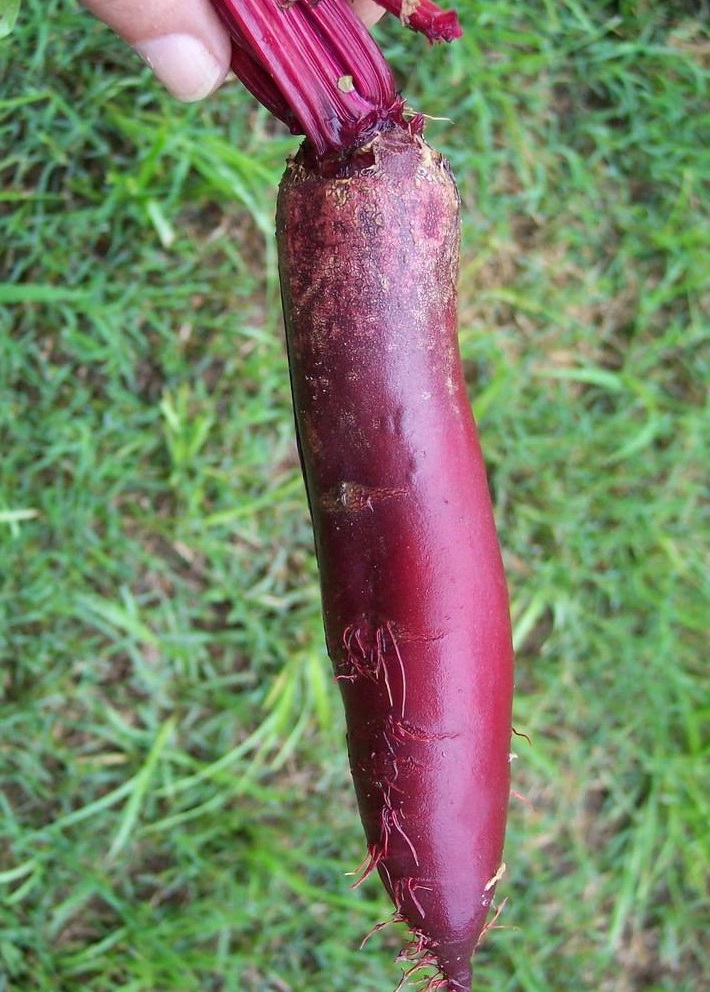
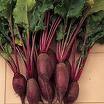


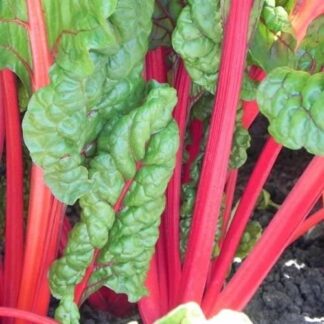
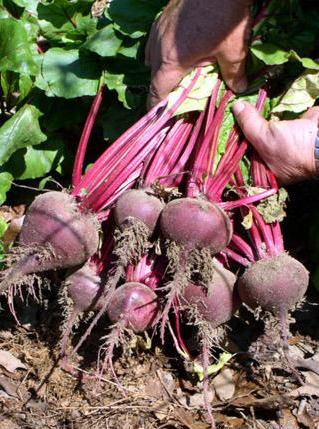





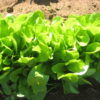





Mike Fronek (verified owner) –
Appreciated the personalized packaging, planting instructions and how the seeds where dated, assures me they are putting great care into them giving me the best. Can’t wait to harvest and looking forward to canning and best of all consume what God has provided.
Anonymous (verified owner) –
good service and good quality
Stephanie S. (verified owner) –
5 stars for your service. Super fast delivery. Nothing to report on the seeds themselves yet.
Logan (verified owner) –
great
Tom Postorino (verified owner) –
They’re coming up now
Hazel Hardisty (verified owner) –
Excellent!
Sally (verified owner) –